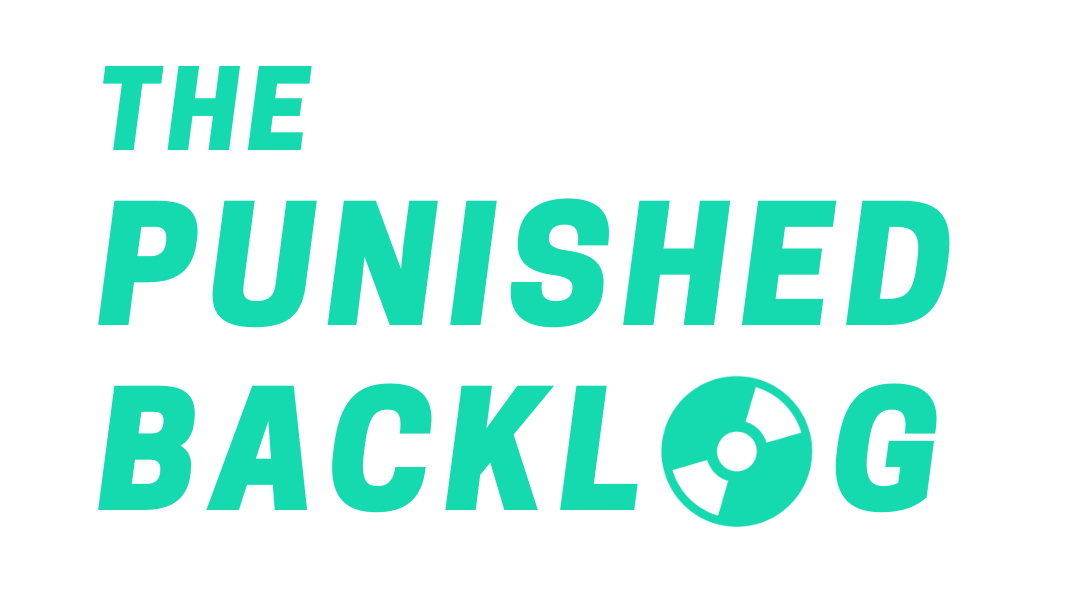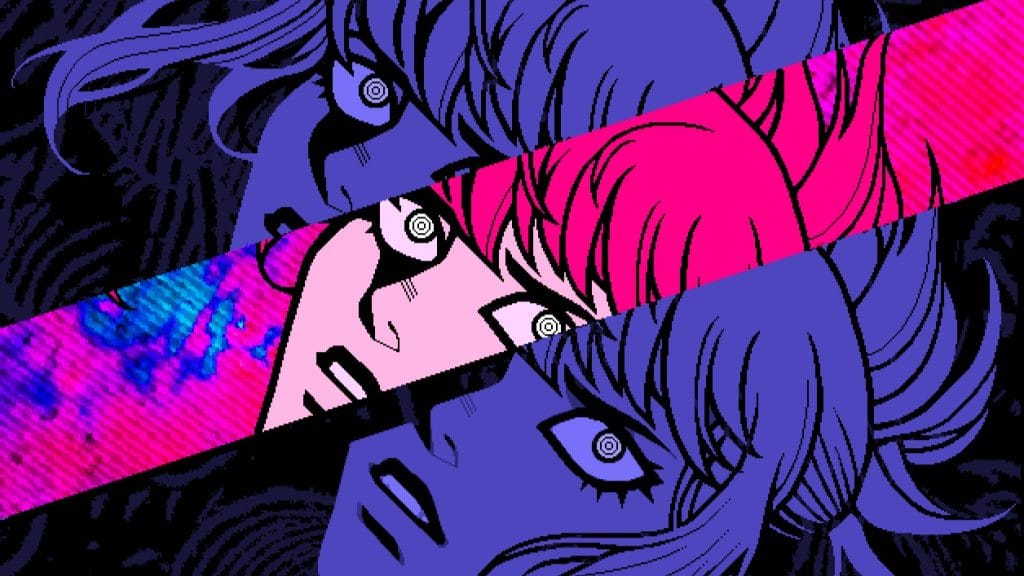There’s something about school and demons that makes them go together like peanut butter and fluff. Whether those demons are the football bullies or an extradimensional poison spitter, movies and games love to pair up that time in American life with overcoming evil. Developer Necrosoft Games enters this popular arena with their new release, Demonschool, to mixed results.
Taking inspiration from Shin Megami Tensai and Buffy the Vampire Slayer, Demonschool thrusts players into a world on the brink of apocalypse. Only a group of plucky undergraduates have the abilities needed to stop it, throwing them in direct confrontation with everyone from the police to school administrators to, yes, demons.
With sharp design work and even sharper writing, Demonschool is a fun package dragged down by repetitive and simplistic gameplay. For every clever witticism, there is a tedious gameplay section that gets in the way of the fun. While I wouldn’t say Demonschool is a bad game, the mechanics and lack of polish hold it back from the excellence it deserved.
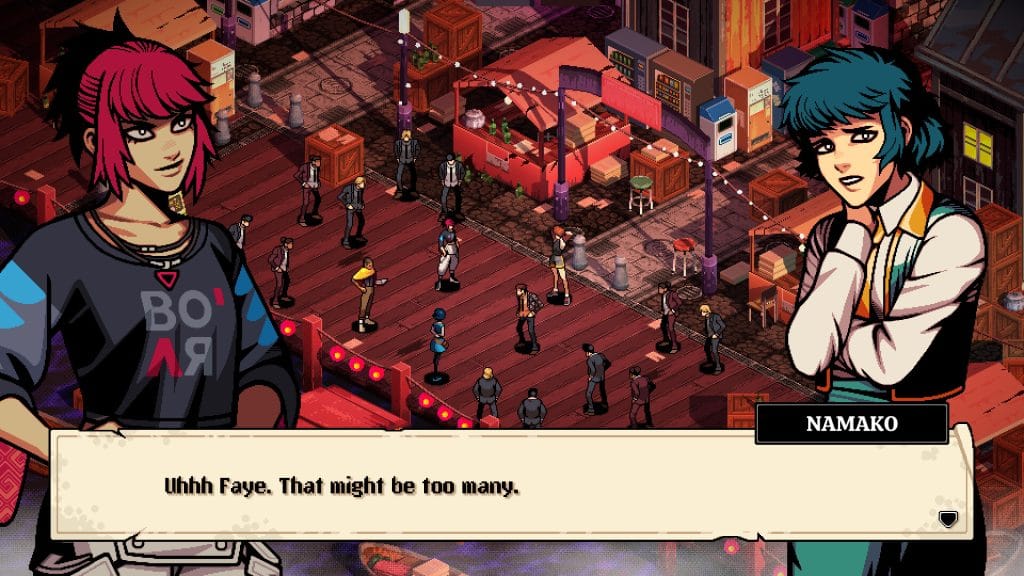
Island Life
It’s move-in day at Hemsk University, and Namako is already having a bad time. Not only did some weird girl named Faye keep talking her ear off about demons on the boat ride over, but now gangsters tell her she can’t stay. Luckily, that Faye girl is here to punch those gangsters in the face and tell them Namako belongs. What a weird first day.
Demonschool follows Faye and her growing entourage of demon hunters as they fight to stop a demonic apocalypse. The Black Magic Club, as they come to be known, spends their days receiving weird assignments from their professor that lead them to close portals all over the island to stop whatever is going on. In between classes, Faye can spend time with her companions, learning more about their backstories and what led them to Hemsk University. Faye can also help out the townspeople on the island as she learns more and more about what the demons are doing here.

All in all, the story of Demonschool is pretty standard fare, helped immensely by some excellent writing. The main characters come alive with quips and jokes that show the relationship that grows between them. Faye’s obsession with inserting demons into every conversation never gets old, nor does her continued belief that Namako is a goth. One of the early party members, Destin, is a highlight as well (especially his beliefs around milk).
Demonschool covers all the character tropes you would expect (the Jock, the Outsider, the Geek, etc.) but with a level of heart and passion that makes them feel real. Set against the ludicrous events around them, the humor each character brings lightens up the story and helps players feel invested. I loved spending time with each character, if only to see the weird situations they would get themselves into. Sadly, those situations always end one way.
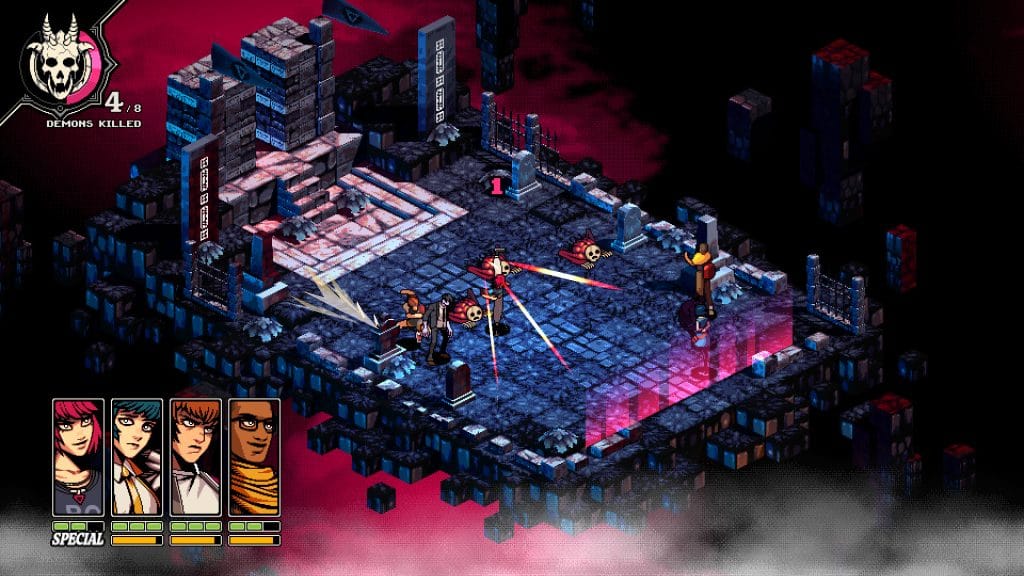
Tactical School Action
Players will spend most of their time in Demonschool in grid-based, isometric battle sequences. For each fight, you’ll place four party members onto a field with a variable number of enemies and try to achieve a specific turn limit. You can move your party a set number of times, determined by a set of action points. The first action costs one point, the second two, and so on. Characters can move in the eight cardinal directions and deal damage by moving into enemies. Some characters can push enemies into other tiles, others can stun or pull them closer, and all can perform combo damage by moving enemies into their allies. Add in some basic elemental weakness charts and status effects, and you have the tactics action of Demonschool.
While there are some strategic choices needed to ace each assignment, the combat generally loses its luster early on in Demonschool. Each quest, side quest, and bonding event ends in combat, with similar enemies for the majority of the game. There is no escaping these combat sections; if you want to do anything, you’ll have to fight. In most games, this wouldn’t be a problem. Combat allows characters to gain experience or find new gear to make combat easier/faster in the future — or at least make the damage numbers go up.
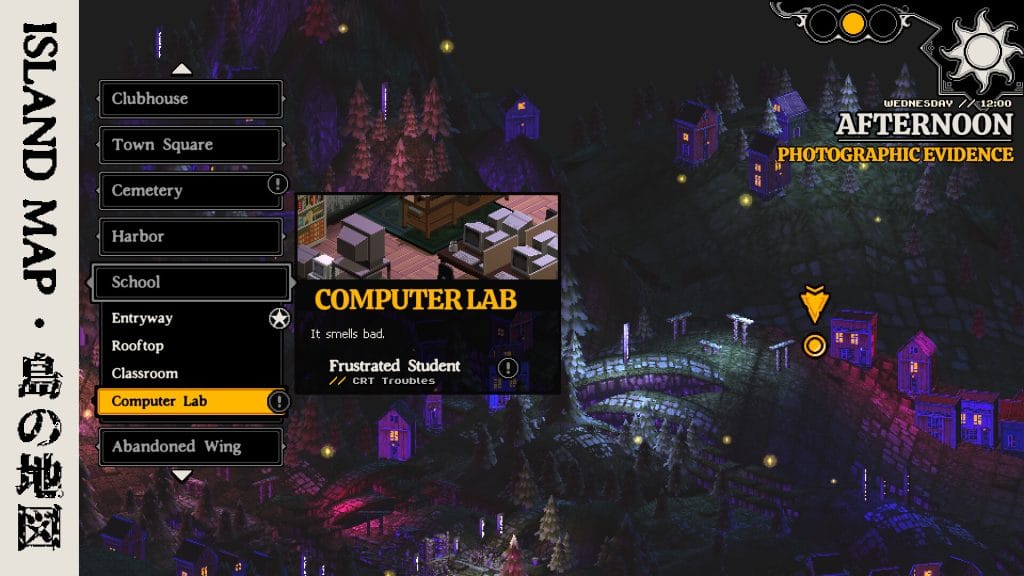
Demonschool has none of that. Combat exists purely as a means to an end, an interstitial way to keep the player engaged. The only reason to perfect an encounter is to earn currency, which can be exchanged for cosmetics for your hideout or new skills to use in combat. Even after purchasing a skill, though, you only “unlock” it by taking time to study it. After studying, party members need three to four in-game days to rest before they can study again. So there’s a natural disconnect between winning in battle and seeing your characters progress.
To make matters worse, unlike in most other RPGs, you don’t actually earn the bulk of these skills by fighting. A small number of skills can be purchased, yes, but the vast majority you’ll find via side quests… which always end in yet another combat scenario. Essentially, combat serves no mechanical purpose; it’s just there to pass the time.
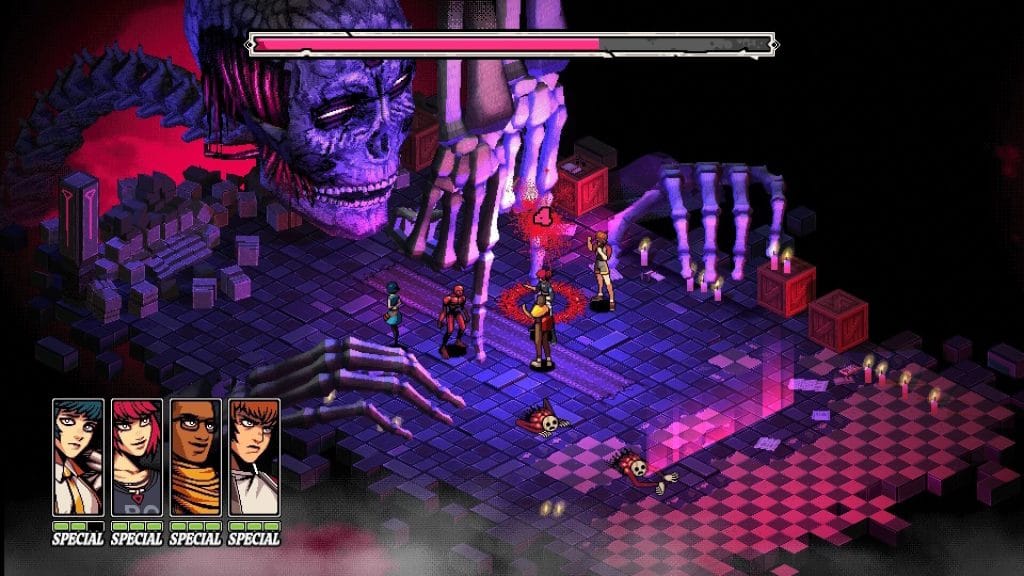
Variety, or Lack Thereof
Justifying combat in any game is tricky, and Demonschool is no different. But because everything leads to combat, it’s especially important for it to feel worthwhile.
Demonschool’s strengths lie in its characters and writing, and the amount of forced combat gets in the way of that. Add to this the lack of benefit to combat, and Demonschool struggles to justify the time invested. Often, I felt bored facing the same enemies on the same board regardless of the previous scenario. Even something as simple as talking about a romance novel with your new friend leads to another forced combat scenario that adds nothing to the experience. After a few hours, the combat of Demonschool became tedious instead of interesting.
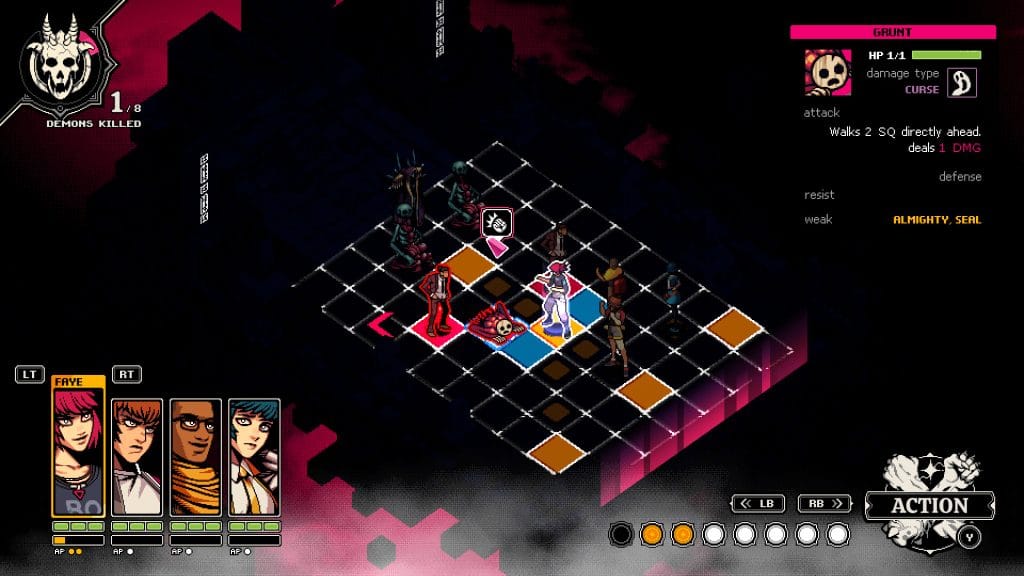
While each character has their own mechanic they can bring to the battlefield, it does little to shake up the monotony of the battles themselves. I am certain there will be people who will find the combat satisfying just for the sake of satisfaction, but I found these scenarios increasingly grating the longer the game went on.
Demonschool does offer a variety of mini-games players can use to increase their “connection” with various party members, but these mini-games also boil down to very similar mechanics. Two of the earliest side events, cooking and fishing, are carbon copies of one another — one is just presented vertically, while the other takes place horizontally. While a much-needed diversion from combat, these mini-games do little to add to the overall experience.
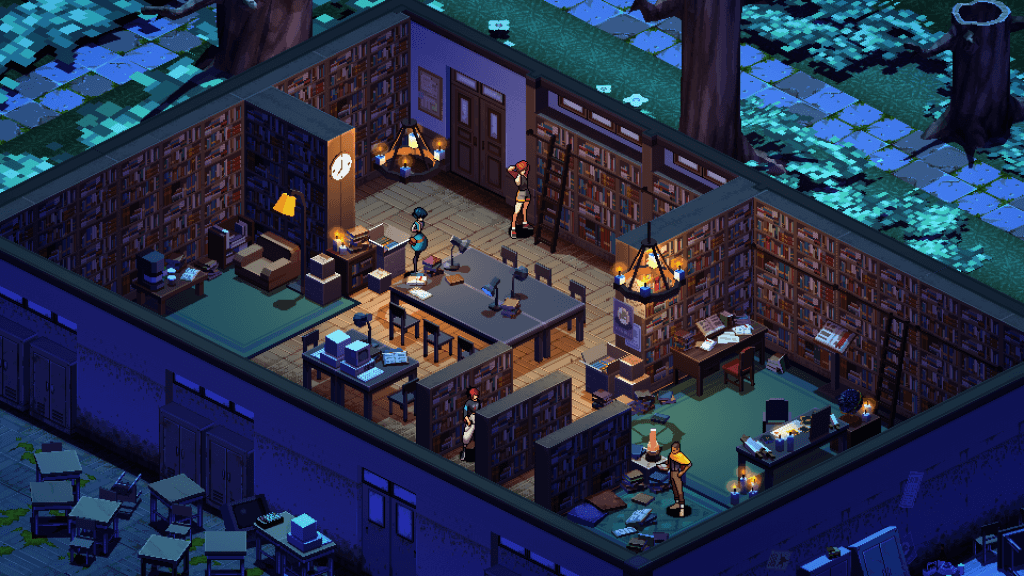
Schoolwork Has Never Looked This Good
Graphically, Demonschool is a delight to look at. The sprite work, set against intricate backgrounds, is gorgeous and an amazing achievement for the small team at Necrosoft. The outside battle environments are particularly stunning, especially once situations necessitate leaving the school. Demonschool feels both visually retro and modern, with great character designs as well. A villain who appears later in the game deserves a special shoutout for having an absolutely unhinged design; you’ll need to see it to understand.
Demonschool’s soundtrack is a highlight as well, creating perfect ambience in each setting. From jaunty and cheerful melodies while fishing to ominous and gloomy ones during darker moments, the musical cues set the stage wonderfully for the events to follow.
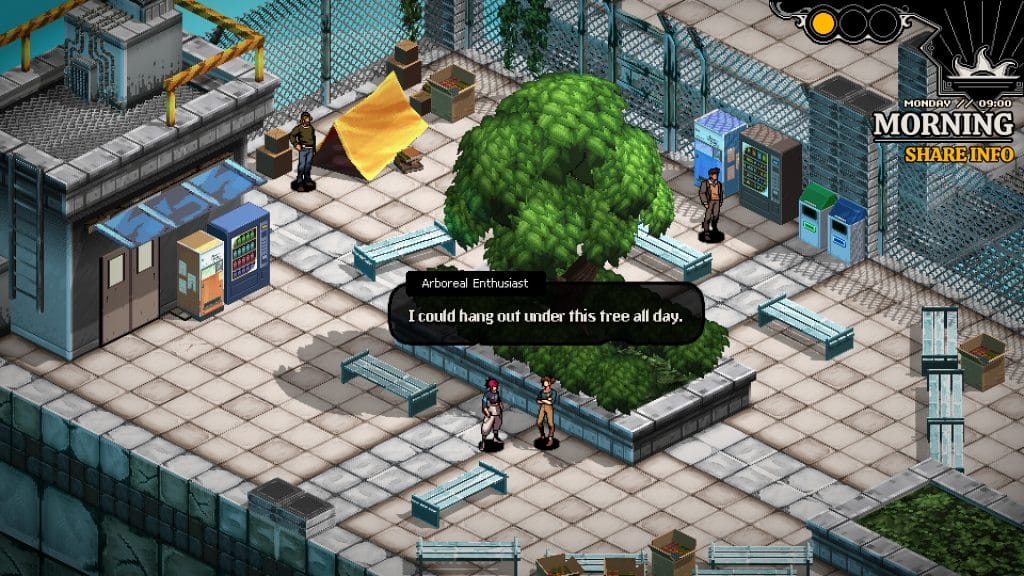
Final Thoughts: Graduation Day
Unfortunately, our PlayStation 5 review build of Demonschool struggled with a number of bugs. While some were inoffensive, like uninteractable markers or background elements becoming trapped on screen, others were game-breaking. The final few in-game weeks in particular became a mess of lockups and crashes, especially during combat. Often, I had to reload save files and start scenarios all over again, which did not help alleviate my frustration. Necrosoft has promised a day-one patch, and this review will be updated to address any changes.
Overall, I did enjoy my time with Demonschool. Its vibrant cast of characters and fun take on the Killing School Life genre helped elevate the journey, but the needless amount of combat, lack of meaningful variety or rewards, and bugs soured the experience somewhat. While Demonschool is a worthy addition to the genre, I am more excited to see what comes next.
Score: 6.5/10
Demonschool, developed by Necrosoft Games and published by Ysbryd Games, releases on September 19 for PC (via Steam), PlayStation 4 & 5, Xbox Series X/S, Xbox One, and Nintendo Switch. MSRP: $24.99. Version reviewed: PS5.
Disclaimer: A review code was provided by the publisher.
A Second Opinion on Demonschool
Written by David Silbert:
Gary and I had the opportunity to review Demonschool from two different console perspectives. He played on PS5, while I played on PC (via Steam Deck). Like him, I encountered some unfortunate bugs — most notably a crash during the game’s opening chapter. Thankfully, the game’s auto-save kicked in, preventing me from losing progress, but it was an unfortunate occurrence nonetheless.
On the whole, however, I’d say my time on PC has been relatively smooth. Much like Gary, I’ve adored Demonschool’s art and music. The blood-soaked walls of Hemsk University are a loving homage to old-school Shin Megami Tensei games, while the jazz-infused soundtrack recalls fond memories of me exploring Tokyo in Persona 5.
Demonschool’s ensemble cast brings the over-the-top camp you’d expect from a Persona-inspired title, mostly to great effect. I chuckled at the group’s inside jokes, even if a few — like Faye constantly correcting Namako’s grammar — fell flat. While hardly a substitute for a 100-hour Atlus epic, Demonschool’s narrative offers just enough to entertain.
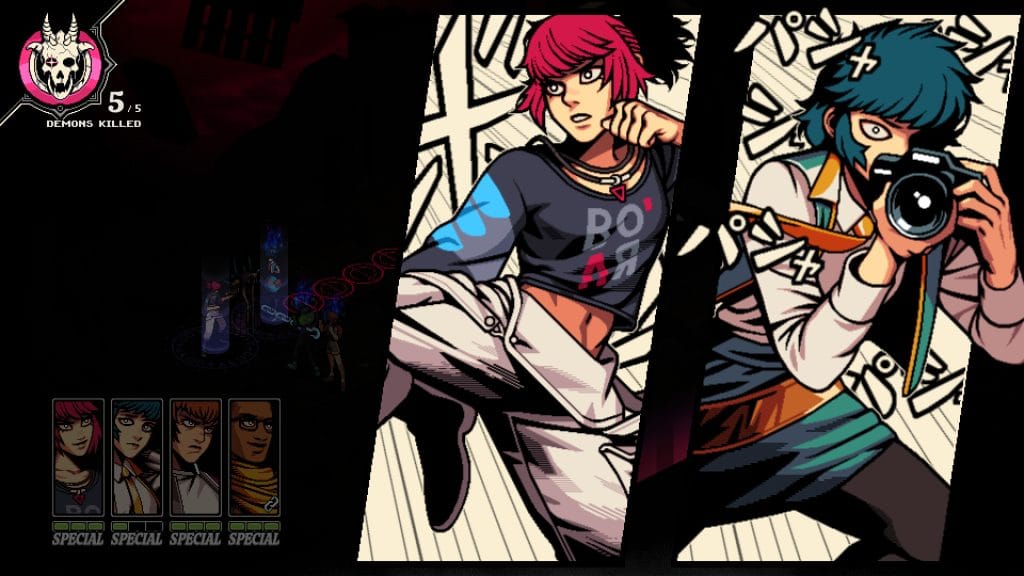
Time for an All-Out Attack!!
On the combat front, I’m a bit more bullish than Gary. I’ve covered Demonschool in the past, and every time I went hands-on with a new demo, my takeaway was always the same: The battle system slaps. Like Persona and Persona 2, you’ll duke it out with demons on isometric grids; however, what differentiates Demonschool is the planning element. Turns only execute after you’ve planned each character’s moves. You can undo and redo actions as long as you need, until you find the perfect sequence. Tap a button to confirm, and you’ll see the action play out in one glorious, gory mess.
There are nuances to the combat that are annoying. Players can “sidestep” one space laterally before attacking, which allows for a bit more precision, but often I’d find myself out of position when the next wave of enemies appeared. The game’s focus on perfecting combat sequences adds a welcome puzzle layer to the mix, which made me look forward to each new scenario. However, there’s a fair bit of trial-and-error needed to ace these encounters. As with so many RPG battle systems, your mileage will vary.
Personally, I’ve had fun — even if, to Gary’s point, there isn’t much to see or do outside of combat. Unlike modern Persona games, don’t expect elaborate social links that’ll expand your characters’ abilities. There are mini-games and even smaller micro-games, but they serve more as distractions than full-blown obsessions. Set the right expectations before going in, and you’ll have a better time overall.
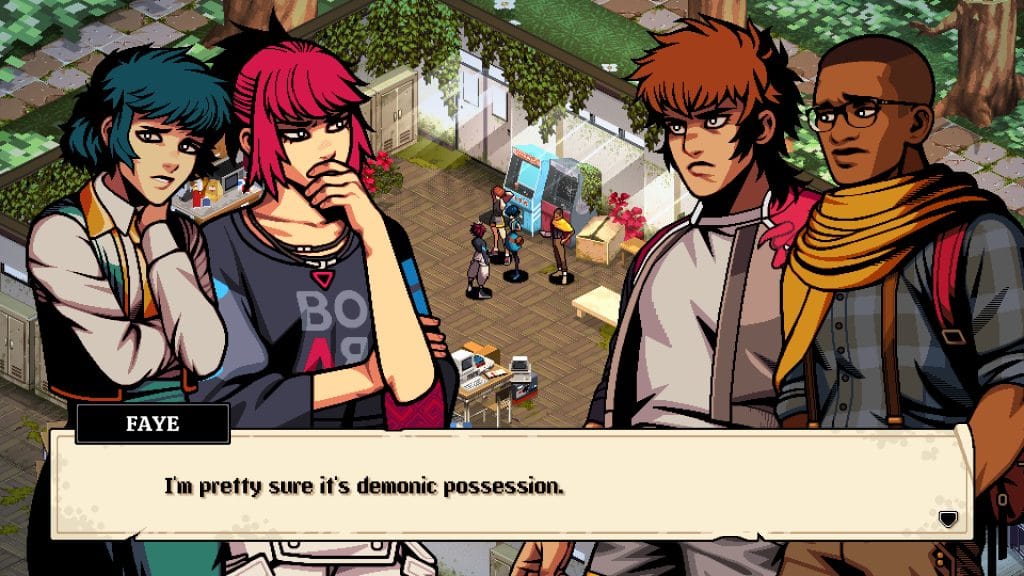
Final Thoughts
The team at Necrosoft suffered an unfortunate setback when they delayed Demonschool to avoid a head-on collision with Hollow Knight: Silksong. Based on my play time, I’m glad it’s getting its time to shine — even if it’s a bit baffling to see performance issues in the latest build, given the extra time for polish. As with Gary, I’ll update my thoughts here based on the day-one patch.

